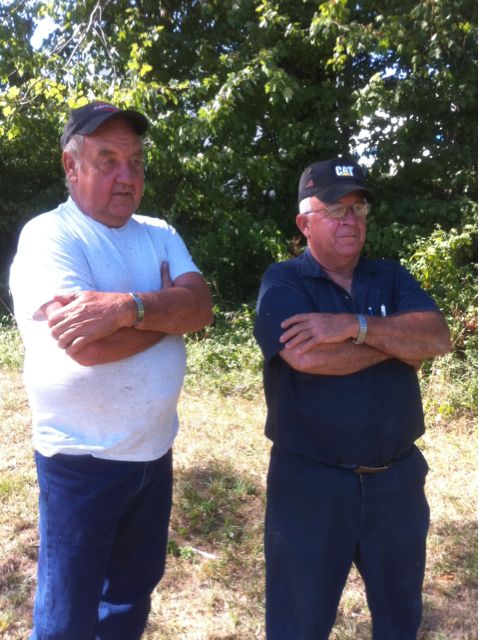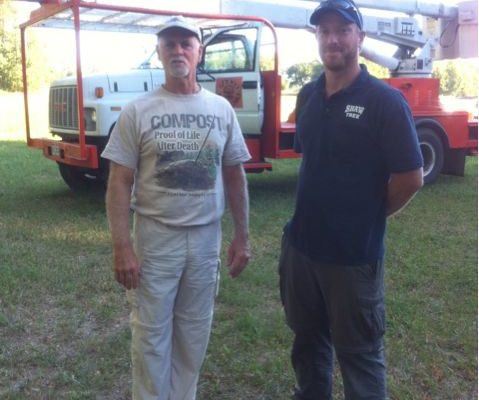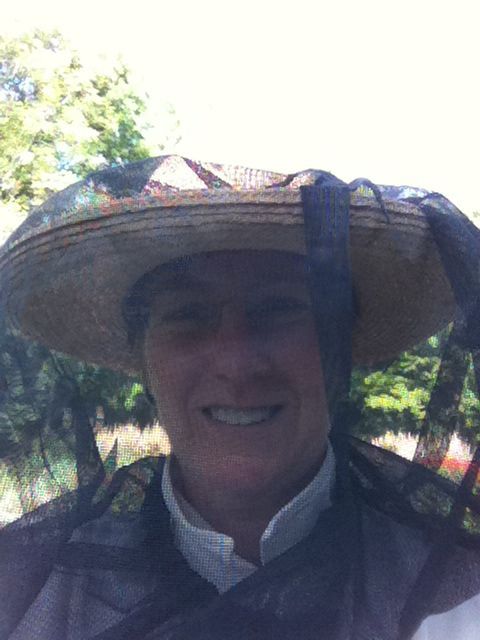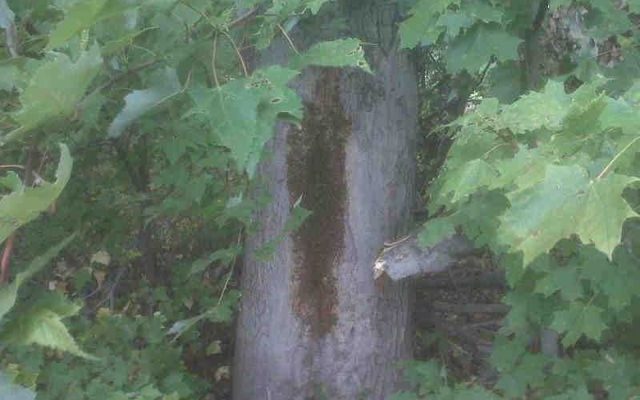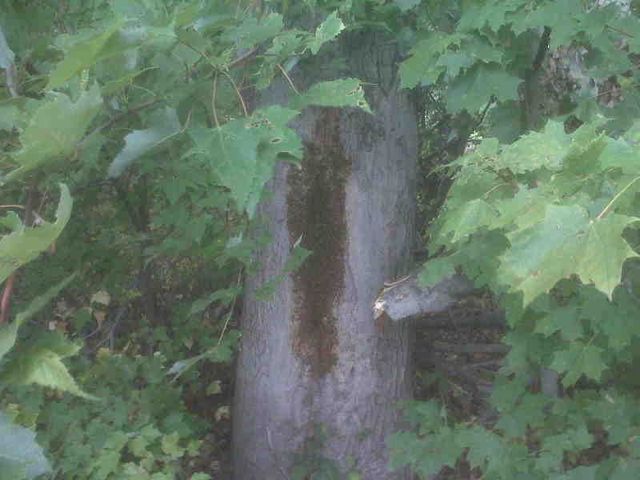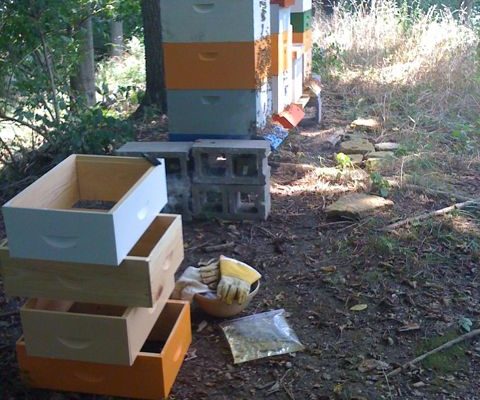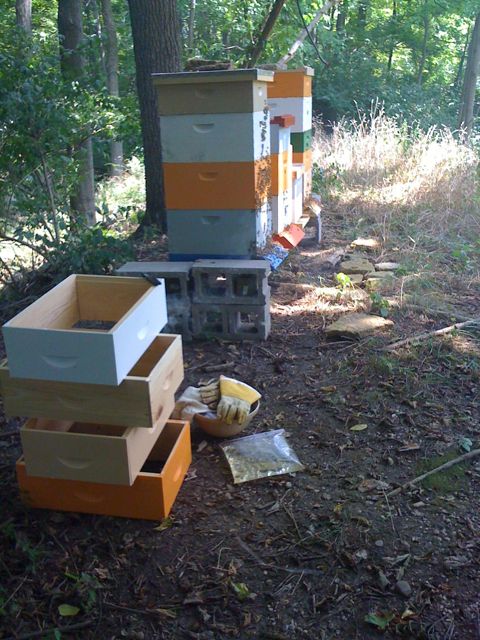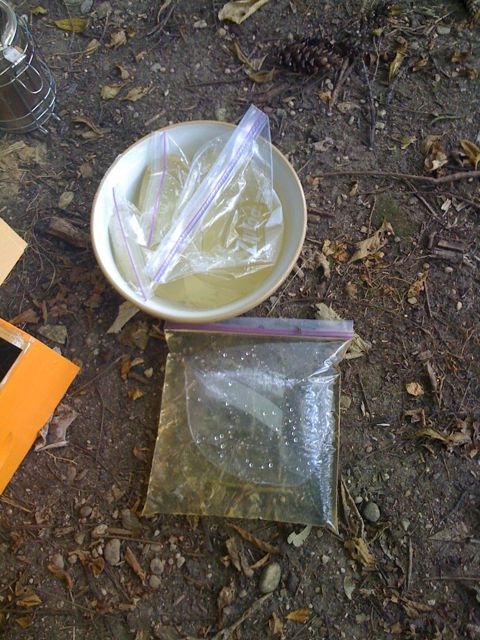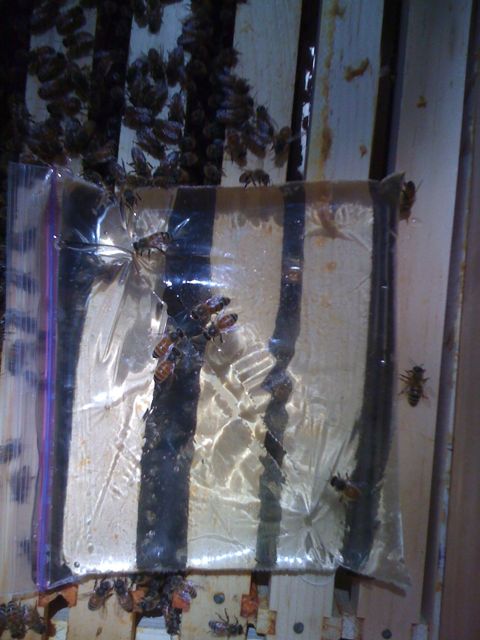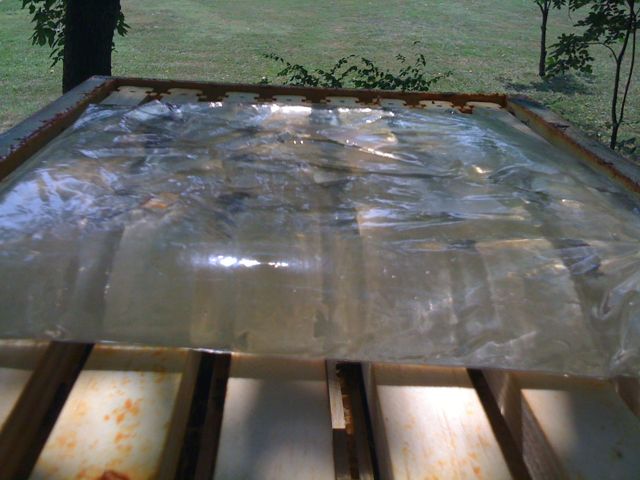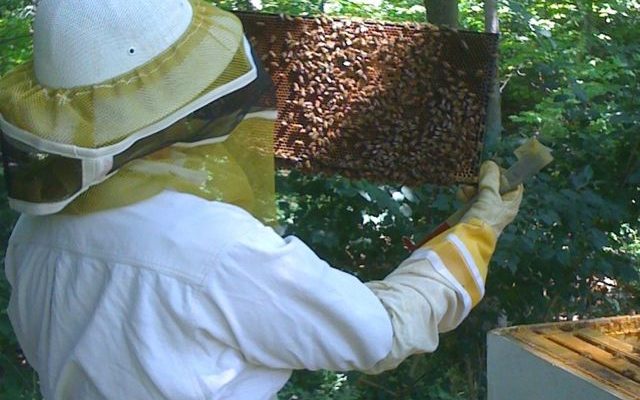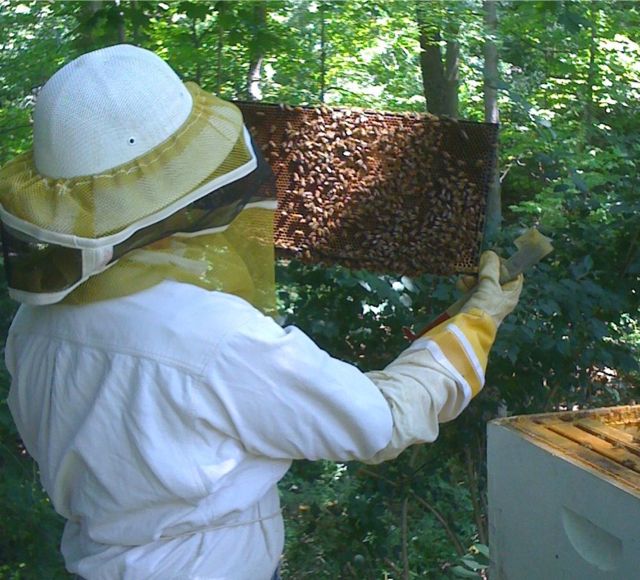Where on earth to begin with this one? Seriously…I’m sitting here wondering how to tell you about the day yesterday.
We now have a new colony of bees in the TwoHoneys apiary: We call it August Boatwright, after the Queen Latifah character in the Secret Life of Bees. It is August, after all, right? And all these hives are named for strong women…Amazons, Tomboys, Girls of Summer, and now…August Boatwright.(We still haven’t officially named the split hive…I don’t know why I’ve hesitated at that one, but I have.)
Okay, I think I’ll tell you about the bee tree in stages…how would that work? That way, you won’t get bored and you’ll come back here for your update for a few days. Good idea. That’s what we’ll do.
So, Dave and Kyle met me at the tree at about 8:30 AM.
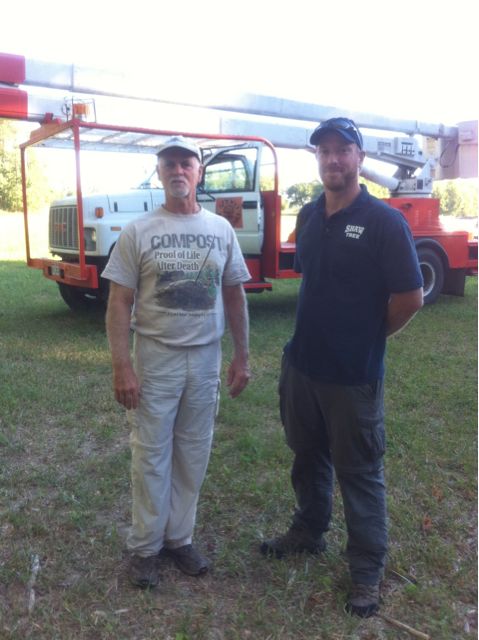
Then, just as we were beginning to trim the tree back in order to cut it down, the landowner roared up in his pick-up truck and threw a fit. Apparently there had been a bit of miscommunication between him and the folks who hired us to do this job…and I must say that being the neighbor of a big company with a big building would certainly come with big challenges. However, in the end, the guy was a pussycat. His anger soon subsided, and we worked out a little plan for proceeding. We even worked out the possibility of keeping some hives on his farm. See what a pussycat?

He enjoyed us so much that he came back later and brought his buddy, and they watched us work for a while.
